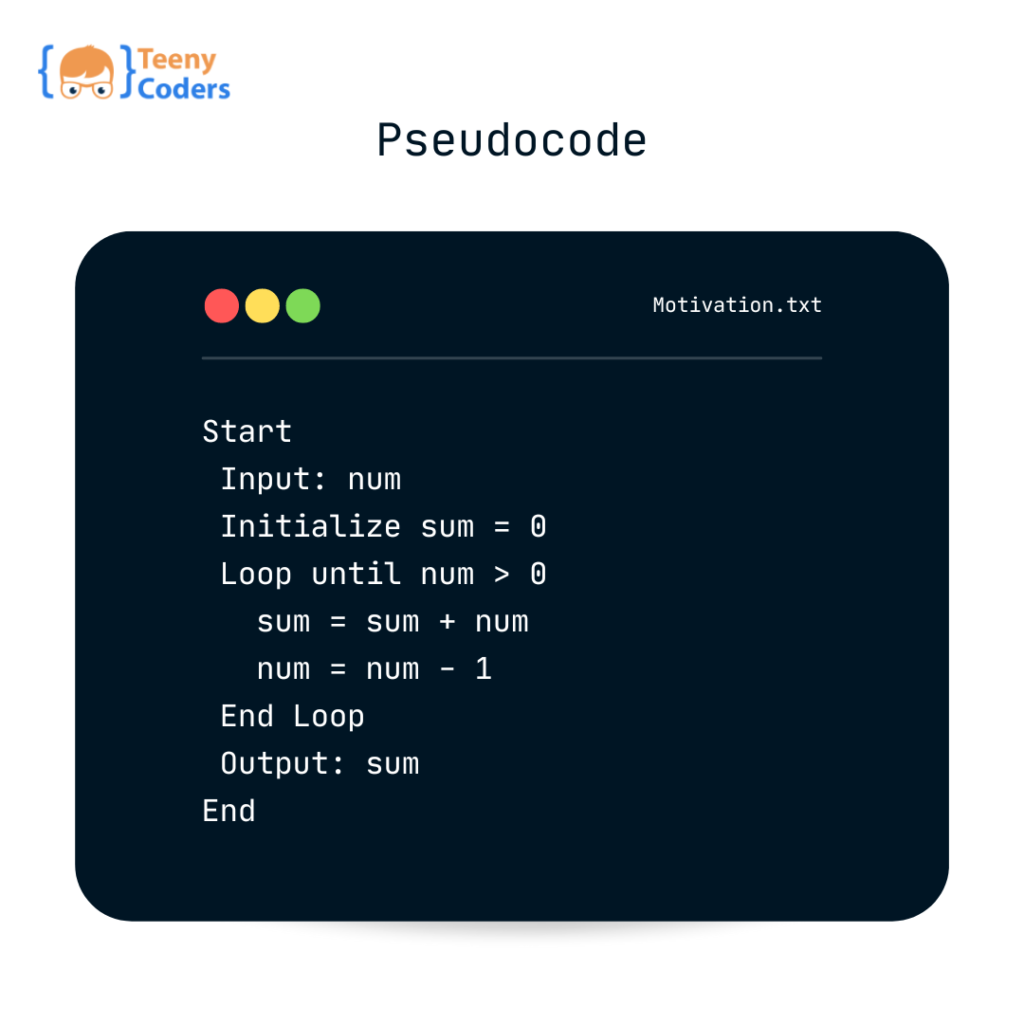Writing pseudocode is an essential skill for programmers and developers, as it serves as a bridge between human understanding and machine instructions. Whether you’re a beginner or looking to enhance your programming skills, this article will provide you with a detailed and user-friendly guide on how to write a pseudocode effectively.
How to Write a Pseudocode?
Pseudocode is a high-level description of an algorithm that uses a mixture of natural language and programming constructs. Beginners who want to learn how to write a Pseudocode needs to read the whole blog before they a Pseudocode. It helps programmers plan and outline the logic of their code before diving into actual implementation. Here’s how to write pseudocode effectively:
Use Structured English
Write your pseudocode using structured English. Use concise sentences to describe the steps of your algorithm, focusing on logic rather than specific programming syntax.
Choose Appropriate Keywords
Incorporate keywords that represent common programming actions, such as “if,” “else,” “while,” and “for.” This makes your pseudocode more understandable and closer to actual code.
Break Down the Algorithm
Divide your algorithm into sections, each representing a specific task. This improves readability and allows you to focus on one aspect at a time.
Utilize Indentation
Indentation is crucial in pseudocode to indicate hierarchy and nesting of statements. Proper indentation makes the logic flow clear and easily understandable.
Include Comments
Adding comments to your pseudocode helps explain complex sections and improves collaboration with other programmers who might read your pseudocode.
Test Your Pseudocode
Once you’ve written your pseudocode, mentally run through the steps to ensure they make sense. This helps catch any logical errors or inconsistencies before moving on to actual coding.
Example Pseudocode:

Key Components of Effective Pseudocode
Key Components of Effective Pseudocode
Once you’ve written your pseudocode, mentally run through the steps to ensure they make sense. This helps catch any logical errors or inconsistencies before moving on to actual coding.
Declarations
Declare any variables or data structures you’ll be using in your algorithm. This provides a clear understanding of the data involved.
Input/Output
Clearly define how data will be input into the algorithm and how results will be presented as output.
Control Structures
Utilize control structures like “if,” “else,” “while,” and “for” to direct the flow of your algorithm based on specific conditions.
Loops
Implement loops to repeat a set of instructions until a certain condition is met. This is useful for iterating over data or performing repetitive tasks.
Error Handling
Include steps to handle potential errors or exceptions that may arise during the execution of the algorithm.
Common Mistakes to Avoid
Writing pseudocode requires precision and clarity. Here are some common mistakes to steer clear of:
- Using ambiguous language that can lead to multiple interpretations.
- Neglecting to include necessary steps or variables.
- Being overly verbose instead of keeping the descriptions concise.
- Mixing programming syntax with natural language.
Conclusion
Writing pseudocode is an invaluable skill that every programmer should master. By following the guidelines and techniques outlined in this article, you can create clear, concise, and effective pseudocode for your programming projects. Remember to focus on understanding the problem, breaking down the logic, and utilizing structured English to describe your algorithm. With practice, you’ll be able to seamlessly translate your pseudocode into actual code, enhancing your programming capabilities.


